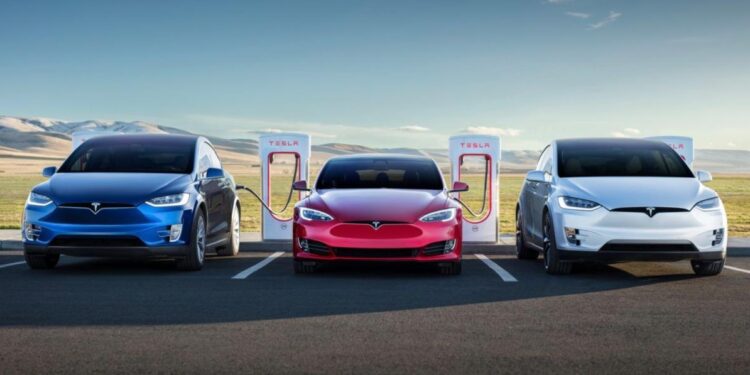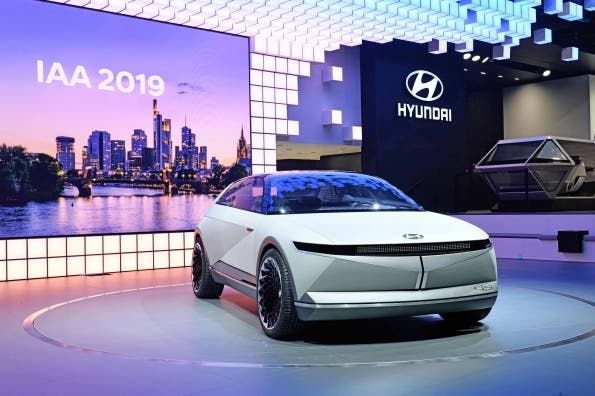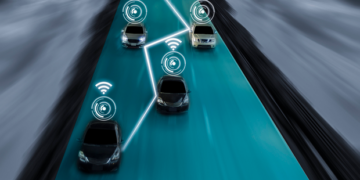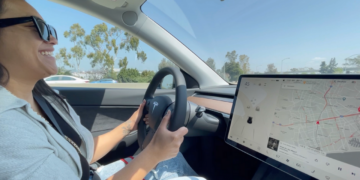In the rapidly evolving landscape of transportation, electric vehicles (EVs) have emerged as a pivotal force transforming the global automotive market. The shift from conventional internal combustion engines to electric powertrains is not merely a trend—it is a revolution driven by technology, environmental urgency, and supportive government policies. This article explores how electric cars are accelerating global market growth by examining technological innovations, environmental benefits, market drivers, regulatory influences, and future prospects. As the industry matures, it offers immense opportunities for investors, manufacturers, and consumers alike.
The Evolution of Electric Vehicles
Electric vehicles have come a long way from their humble beginnings. Early experiments in the 19th century paved the way for modern electric cars that boast impressive performance and range. Today, major automotive manufacturers and startups are investing heavily in EV technology, leading to increased production volumes and lower costs.
A. Historical Milestones
- Early Innovations: The first electric vehicles appeared in the 1800s, but they were soon overshadowed by gasoline-powered cars.
- Mid-20th Century Decline: With the mass production of affordable gasoline vehicles, electric cars lost prominence.
- Modern Resurgence: In the 1990s and 2000s, environmental concerns and advances in battery technology led to a renewed interest in electric vehicles.
B. Technological Breakthroughs
Advances in battery chemistry, energy storage, and electric motor efficiency have been central to the modern EV revolution. Lithium-ion batteries, for example, have dramatically improved the range and performance of electric cars while reducing charging times. Additionally, the integration of smart technologies has enabled features like regenerative braking, real-time diagnostics, and advanced driver-assistance systems (ADAS).
Global Market Growth Drivers
The rapid expansion of the electric car market is fueled by several key factors that are reshaping the automotive landscape. These drivers are not only influencing consumer preferences but are also transforming how manufacturers and governments approach transportation.
A. Environmental Imperatives
As concerns over climate change intensify, electric vehicles offer a cleaner, more sustainable alternative to traditional cars. The reduction of greenhouse gas emissions and the decrease in air pollutants are primary motivators for both consumers and policymakers.
B. Economic Incentives
Governments worldwide are rolling out incentives to promote the adoption of electric vehicles. These include tax breaks, rebates, and subsidies aimed at reducing the total cost of ownership for EV buyers. In addition, investments in charging infrastructure are making electric cars more accessible.
C. Technological Advancements
Innovations in battery technology, autonomous driving, and connectivity are creating a robust ecosystem for electric vehicles. As the technology matures, electric cars are becoming more reliable, efficient, and affordable, encouraging widespread adoption.
D. Shifting Consumer Preferences
Modern consumers are increasingly conscious of their environmental impact and are drawn to the modern aesthetics and performance capabilities of electric vehicles. Additionally, the lower operating and maintenance costs of EVs make them an attractive option compared to traditional vehicles.
Technological Innovations in Electric Vehicles
Electric vehicles are at the intersection of several advanced technologies. The integration of these technologies is not only boosting performance but also enhancing safety and convenience.
A. Battery Technology
Battery performance remains one of the most critical aspects of electric vehicles. Innovations in lithium-ion technology have led to batteries that are lighter, more efficient, and have longer lifespans. Research continues into solid-state batteries, which promise even higher energy densities and faster charging times.
Key Battery Advancements:
A. Improved Energy Density: Enables longer ranges on a single charge.
B. Faster Charging: Reduces downtime and makes EVs more practical for long journeys.
C. Enhanced Safety: New battery designs minimize the risk of thermal runaway.
D. Cost Reduction: Advances in production techniques are lowering overall battery costs.
B. Electric Drivetrains
The design of electric drivetrains has evolved to deliver exceptional performance. Modern electric motors provide instant torque, resulting in swift acceleration and smoother driving experiences. Integration with advanced transmission systems further optimizes energy efficiency.
Components of Modern Drivetrains:
A. High-Performance Electric Motors: Offer immediate responsiveness and superior power output.
B. Advanced Inverters: Ensure efficient conversion of electrical energy to mechanical power.
C. Regenerative Braking Systems: Recover energy during deceleration, extending vehicle range.
C. Autonomous and Connected Technologies
Electric vehicles are often equipped with cutting-edge autonomous and connected technologies. These include sensors, cameras, and radar systems that enable semi-autonomous driving and enhance safety. Connectivity features allow vehicles to communicate with each other and with traffic infrastructure, paving the way for smart city integration.
Features of Autonomous Systems:
A. Adaptive Cruise Control: Maintains safe distances from other vehicles automatically.
B. Lane Keeping Assist: Helps prevent unintentional lane departures.
C. Collision Avoidance Systems: Detect obstacles and alert drivers or take corrective actions.
D. Charging Infrastructure
The expansion of a reliable charging infrastructure is essential for the widespread adoption of electric vehicles. Public and private investments are creating an extensive network of fast-charging stations that make long-distance travel more feasible.
Types of Charging Stations:
A. Fast Chargers: Significantly reduce charging times for long trips.
B. Home Chargers: Provide convenient overnight charging solutions.
C. Workplace Chargers: Enable employees to charge their vehicles during the day.
D. Wireless Charging: An emerging technology that offers effortless energy transfer.
Economic Impacts and Market Growth
Electric vehicles are not just revolutionizing transportation; they are also driving significant economic growth. The shift to EVs is creating new job opportunities, fostering innovation, and reshaping global supply chains.
A. Job Creation and Industrial Growth
The rapid expansion of the electric vehicle market has spurred the growth of entire industries. From battery manufacturing to the development of charging networks, numerous sectors are experiencing robust growth. This shift is creating a wide array of job opportunities, from research and development to manufacturing and service.
B. Investment and Funding
Venture capital and government funding are pouring into the electric vehicle sector. Major automotive companies are partnering with tech firms and startups to develop next-generation EV solutions. The influx of capital is driving rapid innovation and accelerating the time-to-market for new products.
Key Investment Areas:
A. Battery Manufacturing: Expanding production capabilities and research into next-generation batteries.
B. Charging Infrastructure: Building extensive networks to support the growing number of electric vehicles.
C. Autonomous Driving Technologies: Developing AI and machine learning systems to enhance vehicle autonomy.
D. Software and Connectivity: Investing in platforms that enhance vehicle performance and user experience.
C. Global Market Penetration
As electric vehicle technology becomes more accessible, global market penetration is increasing. Markets in Europe, Asia, and North America are witnessing rapid growth in EV adoption, driven by government policies and shifting consumer preferences. Emerging markets are also beginning to embrace electric mobility, further expanding the global footprint of EVs.
Environmental and Social Benefits
Electric vehicles offer significant environmental advantages over traditional combustion engines. These benefits extend beyond reduced carbon emissions to include improvements in air quality, noise reduction, and overall public health.
A. Reduction in Greenhouse Gas Emissions
One of the most compelling arguments for electric vehicles is their potential to significantly lower greenhouse gas emissions. By eliminating tailpipe emissions, EVs contribute to cleaner air and a healthier environment. When powered by renewable energy sources, the environmental benefits are even more pronounced.
B. Improved Urban Air Quality
Cities around the world are grappling with pollution and poor air quality. The adoption of electric vehicles is a crucial step toward reducing harmful pollutants in urban areas. Cleaner air leads to better public health outcomes and can reduce healthcare costs associated with respiratory and cardiovascular diseases.
C. Noise Pollution Reduction
Electric cars operate much more quietly than traditional vehicles, leading to a reduction in noise pollution. This benefit is particularly important in densely populated urban areas where excessive noise can impact quality of life.
D. Enhanced Energy Efficiency
Electric vehicles convert a higher percentage of electrical energy into mechanical power compared to gasoline engines. This improved efficiency results in lower overall energy consumption, making EVs a key component in strategies to reduce global energy demand.
Government Policies and Global Regulations
Public policy plays a pivotal role in the proliferation of electric vehicles. Many governments are enacting measures to incentivize the adoption of EVs, support infrastructure development, and promote clean energy.
A. Incentives and Subsidies
Governments around the globe offer various financial incentives to encourage the purchase of electric vehicles. These incentives reduce the upfront cost and provide long-term savings for consumers.
Examples of Incentives:
A. Tax Credits: Significant deductions for EV buyers.
B. Rebates: Direct cash incentives on the purchase of new electric cars.
C. Grants: Funding for research and development in electric vehicle technology.
B. Emission Regulations
Strict emission standards are pushing automakers to develop cleaner, more efficient vehicles. Regulatory measures aimed at reducing carbon footprints are forcing manufacturers to innovate and transition away from fossil fuels.
C. Infrastructure Development Programs
Many countries are investing heavily in charging infrastructure as part of their commitment to promoting electric mobility. Government-funded projects are expanding the network of public chargers, making electric vehicles more practical for everyday use.
D. International Cooperation
Global initiatives and treaties focused on climate change are accelerating the shift to electric vehicles. International collaboration is critical in setting common standards, sharing technological advancements, and ensuring a coordinated effort to combat environmental challenges.
Challenges Facing the Electric Vehicle Industry
Despite the many advantages, the electric vehicle industry faces several challenges that need to be addressed to sustain long-term growth.
A. Battery Limitations
While battery technology has improved dramatically, challenges remain in terms of energy density, charging time, and recycling. Continued research is vital to overcome these hurdles and further reduce costs.
B. Charging Infrastructure Gaps
Although significant progress has been made, the charging infrastructure in many regions still lags behind the rapid adoption of electric vehicles. Bridging this gap requires coordinated efforts between governments, private companies, and local communities.
C. High Initial Costs
The upfront cost of electric vehicles remains a barrier for many consumers. Despite lower operating costs over time, the initial investment can be substantial. Strategies to reduce production costs and expand financing options are critical to increasing market penetration.
D. Consumer Perception and Education
A lack of understanding about electric vehicles persists among certain segments of consumers. Misinformation and outdated perceptions regarding performance and reliability can hinder adoption. Comprehensive educational campaigns are necessary to inform the public about the benefits of EVs and dispel common myths.
E. Supply Chain Challenges
The electric vehicle market depends on a complex supply chain that includes raw materials like lithium, cobalt, and nickel. Fluctuations in the availability and pricing of these materials can affect production costs and vehicle pricing. Developing sustainable and diversified supply chains is essential for long-term stability.
Future Prospects and Emerging Trends
The electric vehicle market is poised for significant growth in the coming years. As technology continues to advance and consumer adoption increases, several emerging trends are set to define the future of electric mobility.
A. Advancements in Battery Technology
Researchers are actively working on next-generation batteries, such as solid-state batteries, which promise greater energy densities and faster charging times. These innovations could further extend the range of electric vehicles and reduce charging times significantly.
B. Integration of Renewable Energy
The synergy between renewable energy sources and electric vehicles is expected to intensify. As the grid becomes greener, the overall environmental footprint of electric cars will continue to shrink. Innovations in energy storage and smart grid technology will play a critical role in this integration.
C. Expansion of Autonomous Driving
Autonomous driving technology is rapidly evolving. The convergence of electric vehicles with self-driving capabilities will not only enhance safety but also revolutionize mobility as a service (MaaS). This integration could lead to reduced congestion, fewer accidents, and improved urban planning.
D. Global Market Expansion
While regions such as Europe, North America, and parts of Asia have seen rapid adoption of electric vehicles, emerging markets are beginning to catch up. Increased affordability and government initiatives in these regions are expected to drive substantial growth in the EV sector globally.
E. Innovations in Vehicle Design and Connectivity
The design of electric vehicles is also undergoing a transformation. Modern EVs are not just about transportation—they are mobile tech hubs equipped with advanced connectivity, infotainment systems, and smart features. As vehicles become increasingly connected, new business models and revenue streams will emerge.
Economic and Societal Transformations
The widespread adoption of electric vehicles is set to bring profound economic and social changes across the globe.
A. Shifts in Employment Patterns
The transition to electric mobility is creating new job opportunities in manufacturing, technology, and services. While some traditional automotive jobs may decline, new roles in battery production, software development, and infrastructure maintenance are emerging.
B. Urban Planning and Infrastructure
Cities will need to adapt to the influx of electric vehicles by upgrading power grids, expanding charging networks, and rethinking transportation planning. This transformation will require collaboration between public authorities and private enterprises to build sustainable urban ecosystems.
C. Consumer Behavior Evolution
As electric vehicles become more mainstream, consumer behavior is shifting. Buyers are now considering long-term savings, environmental impact, and technological features as key factors in their purchasing decisions. This evolution in consumer mindset is driving automakers to innovate and offer products that meet these new expectations.
D. Global Competitiveness
Countries that invest in electric vehicle technology and infrastructure are likely to emerge as leaders in the global automotive market. Strategic investments in research, development, and manufacturing can provide a competitive edge and stimulate economic growth.
Strategic Recommendations for Stakeholders
For stakeholders looking to capitalize on the rapid growth of electric vehicles, a strategic approach is essential. Manufacturers, investors, policymakers, and consumers must work together to address challenges and unlock new opportunities.
A. For Manufacturers
- Invest in R&D: Prioritize research into advanced battery technologies and autonomous systems.
- Enhance Production Efficiency: Streamline manufacturing processes to reduce costs and meet growing demand.
- Expand Global Reach: Leverage international markets and diversify supply chains to mitigate regional risks.
B. For Investors
- Identify High-Potential Sectors: Focus on companies specializing in battery production, charging infrastructure, and autonomous driving technologies.
- Monitor Regulatory Trends: Stay updated on government policies and incentives that could impact market growth.
- Embrace Long-Term Investments: Recognize the transformative potential of the EV market and invest with a long-term perspective.
C. For Policymakers
- Implement Supportive Policies: Create incentives for EV adoption and invest in charging infrastructure.
- Promote Public-Private Partnerships: Encourage collaboration between government agencies and private companies to drive innovation.
- Enhance Consumer Education: Launch awareness campaigns to inform the public about the benefits of electric vehicles.
D. For Consumers
- Stay Informed: Keep up with the latest advancements and market trends in electric vehicles.
- Evaluate Long-Term Benefits: Consider total cost of ownership, including savings on fuel and maintenance, when purchasing an EV.
- Participate in Incentive Programs: Take advantage of government incentives to make the transition to electric vehicles more affordable.
Conclusion
Electric vehicles are not just an automotive innovation; they represent a seismic shift in how we approach transportation, energy, and environmental sustainability. By accelerating global market growth, electric cars are reshaping industries, redefining consumer expectations, and driving economic transformation on a global scale.
As technology continues to advance and the world becomes increasingly interconnected, the future of electric vehicles looks promising. With ongoing investments in battery technology, autonomous driving, and renewable energy integration, the electric vehicle industry is set to overcome existing challenges and unlock unprecedented opportunities. Stakeholders across the board—from manufacturers and investors to policymakers and consumers—must work together to harness the potential of electric mobility.
The transition to electric vehicles is not without obstacles, but the benefits in terms of environmental sustainability, economic growth, and enhanced quality of life make it a worthy endeavor. As we look ahead, it is clear that electric cars will continue to accelerate global market growth, drive innovation, and pave the way for a cleaner, more efficient future.














